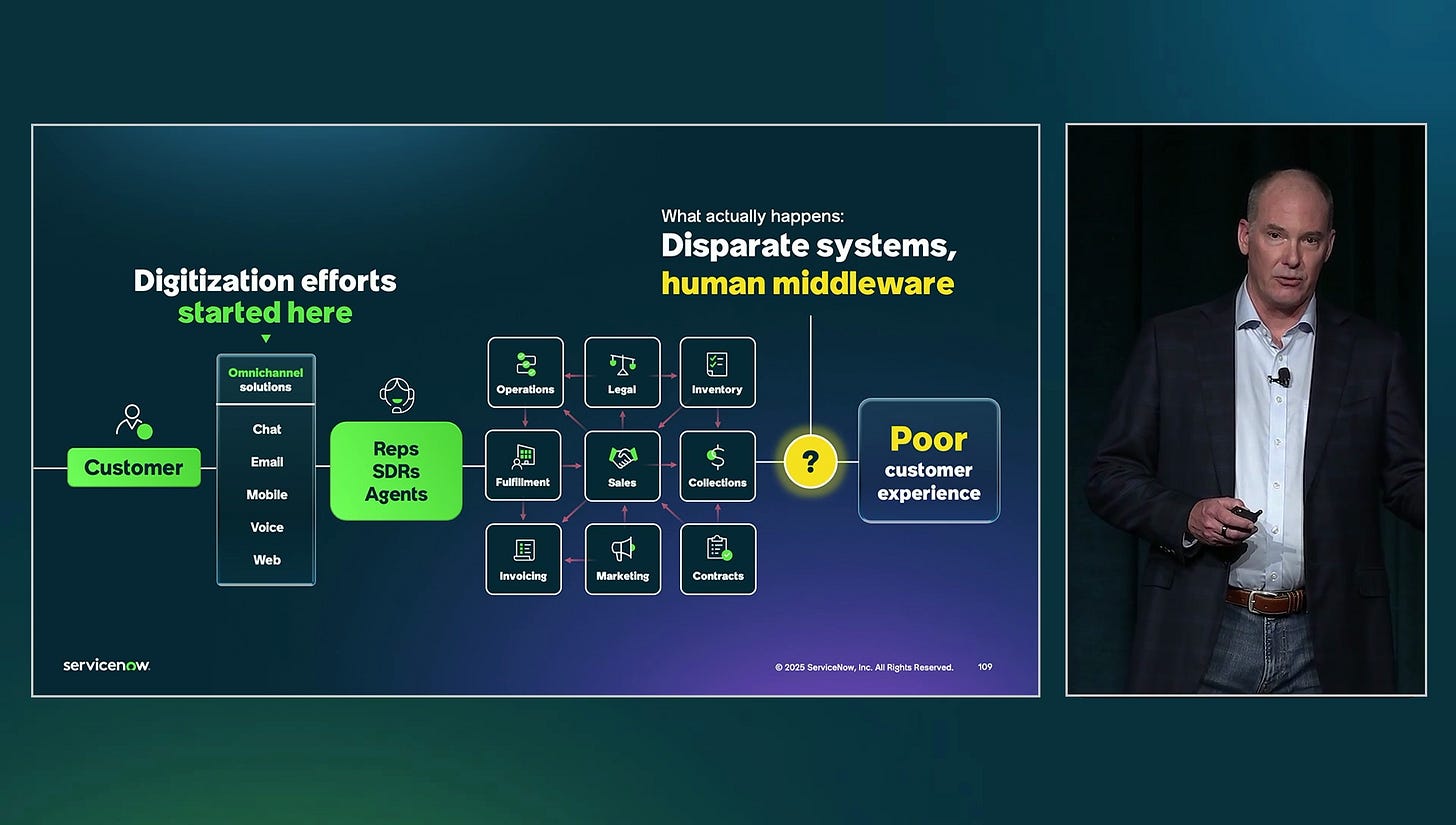There’s a lot to unpack from the recent ServiceNow Knowledge conference, which marks a turning point for the company.
ServiceNow is now officially a CRM provider. The $11B enterprise giant revealed its CRM business has surpassed $1.4B, growing at an impressive 30% year-over-year. This isn't a pivot, though. At last year’s Analyst Summit, the company had disclosed that Customer Service Management (CSM) was matching ITSM for its new logo ACV.
That should make it the 8th largest CRM provider by revenue, just behind Zendesk and HubSpot. If it sustains this growth trajectory, significantly outpacing the pace of the incumbent leaders, it could crack the top five by 2030.
At the event, ServiceNow unveiled its agentic AI platform—a strategic wedge into the broader enterprise. It extends the company’s workflow engine to orchestrate complex, cross-application processes. ServiceNow set a clear ambition: to take the driver’s seat in enterprise digital transformation, with a near-term milestone of reaching $15B in revenue by 2026.
The AI platform is designed to leverage data wherever it resides. Workflow Data Fabric provides access to external systems, supported by over 100 integrations through the Workflow Data Network. RaptorDB, ServiceNow’s native database, is optimized for transactional and analytical workloads at scale. The recent acquisition of Data.World adds cataloging and governance, rounding out a robust data architecture.
ServiceNow’s agentic AI framework is built around three core elements: AI Agent Studio for building custom agents, a library of prebuilt AI agents, and AI Agent Fabric for integrating third-party agents. An orchestration engine unifies these components, combining autonomous execution with the company’s robust low-code workflow automation. The newly introduced AI Control Tower adds centralized governance, a critical capability for scaling AI agents across enterprises.
It’s remarkable that ServiceNow has reached this scale through organic growth. The company has pursued only targeted tuck-in acquisitions. Recent examples include Moveworks (AI assistants), Cuein (conversation analytics), and Logik.ai (CPQ), each selected to accelerate the roadmap without compromising the platform's integrity. This approach has been instrumental in maintaining a unified architecture.
ServiceNow’s CRM suite covers selling, fulfillment, and service through Customer Service Management (CSM), Field Service Management (FSM), and Sales and Order Management (SOM). It's purpose-built for complex workflows and end-to-end resolution orchestration. SOM, the most recent addition, includes lead and opportunity management, sales catalog and guided selling, CPQ, pricing, and order fulfillment.
On the contact center front, ServiceNow announced a strategic partnership with NICE and now integrates with 3CLogic, Amazon Connect, Five9, Genesys, NICE, and Zoom.
What truly sets ServiceNow apart is its focus on complex, cross-functional workflows. It’s built to operate across fragmented systems, stitching together processes that span departments, applications, and data silos. CEO Bill McDermott referenced a conversation with an enterprise running 175 different CRM instances, underscoring the scale of fragmentation ServiceNow intends to pursue.
This is where CRM, workflows, and agentic AI come together. ServiceNow showcased customer-facing use cases where fulfilling a request, whether sales or service, means navigating a maze of disconnected systems and departments that fracture the experience. Its approach overlays AI-powered workflows to streamline complex processes and accelerate resolutions.
ServiceNow laid out bold ambitions, demonstrated impressive technology, and presented a differentiated approach to CRM. The market took notice.







